Abstract
1. A study has been made of the ionic content, and of the fibre water, of rabbit desheathed vagus nerves at rest and after activity in various modified Locke solutions.
2. In normal Locke solution the intracellular sodium amounted to 86·1 μmole/g dry, and the intracellular potassium 186·0 μmole/g dry. Since the fibre water amounted to 1·124 g/g dry the intracellular sodium and potassium concentrations were 76·6 and 165·5 m-mole/kg fibre water, respectively.
3. In potassium-free Locke solution the intracellular sodium and potassium concentrations were 111·0 and 121·7 m-mole/kg, respectively. The intracellular chloride concentration was 40·5 m-mole/kg.
4. In normal Locke solution, a brief period of stimulation followed by a 10 min recovery period produced no significant change in the intracellular contents of potassium, sodium, or water.
5. However, in chloride—Locke solution from which the potassium had been omitted, or to which ouabain (1 mM) had been added, stimulation caused a loss of potassium per impulse of about 20 p-mole/mg dry, i.e. about 4 p-mole/mg wet. A similar loss was found in isethionate—Locke solution that was potassium-free. There was no significant change in any of the other quantities measured (sodium, chloride, and fibre water).
6. The efflux of radioactively labelled potassium was measured in potassium-free Locke solution at rest (kr) and during activity (ks). At 24° C, kr was 0·0084 min-1 and ks was 0·000178 impulse-1.
7. When the chloride of Locke solution was replaced by isethionate there was an increase in both kr (about 12%) and ks (about 21%).
8. Ouabain (1 mM) increased ks (by about 70%). This increase seemed to be independent of whether the anion present was chloride or isethionate.
9. It is argued that these results indicate that the electrogenicity of the pump plays a relatively small role in maintaining the ionic balance in mammalina C fibres.
Full text
PDF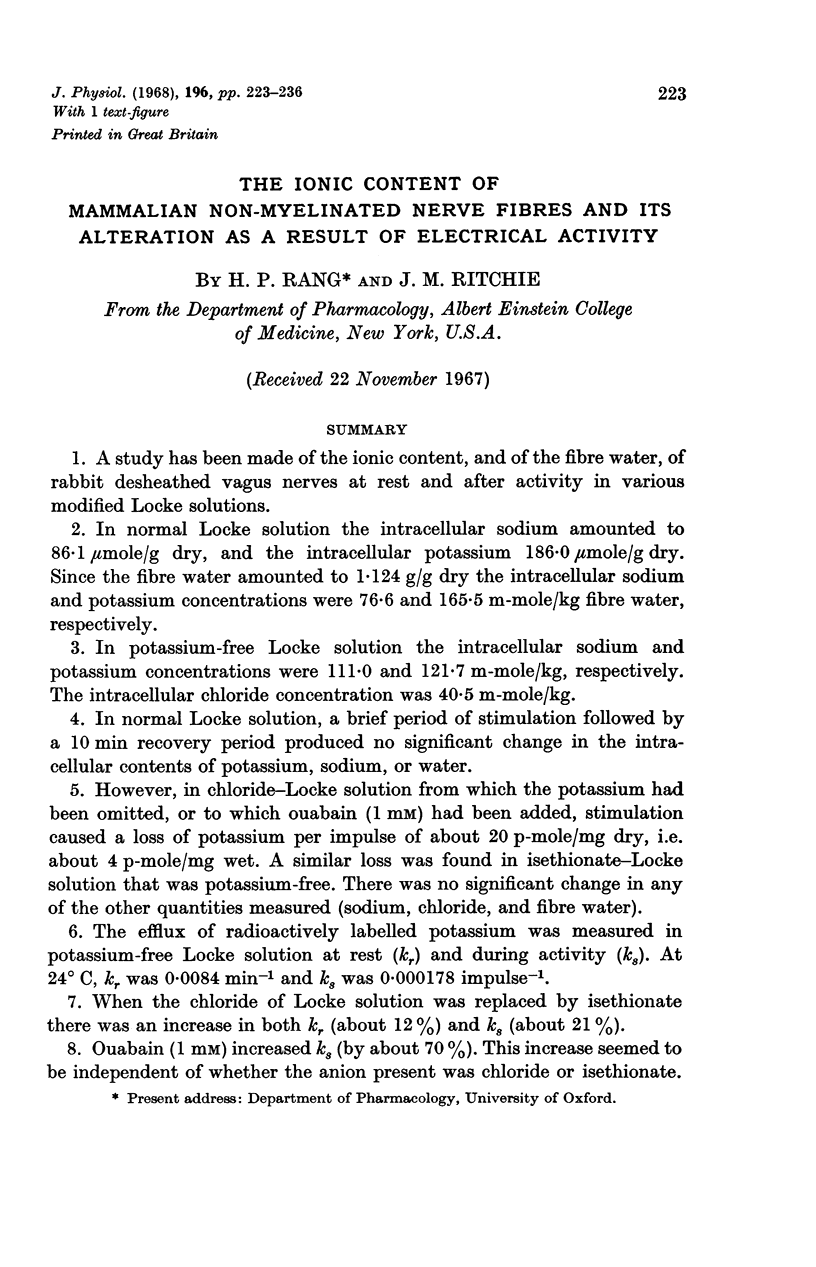
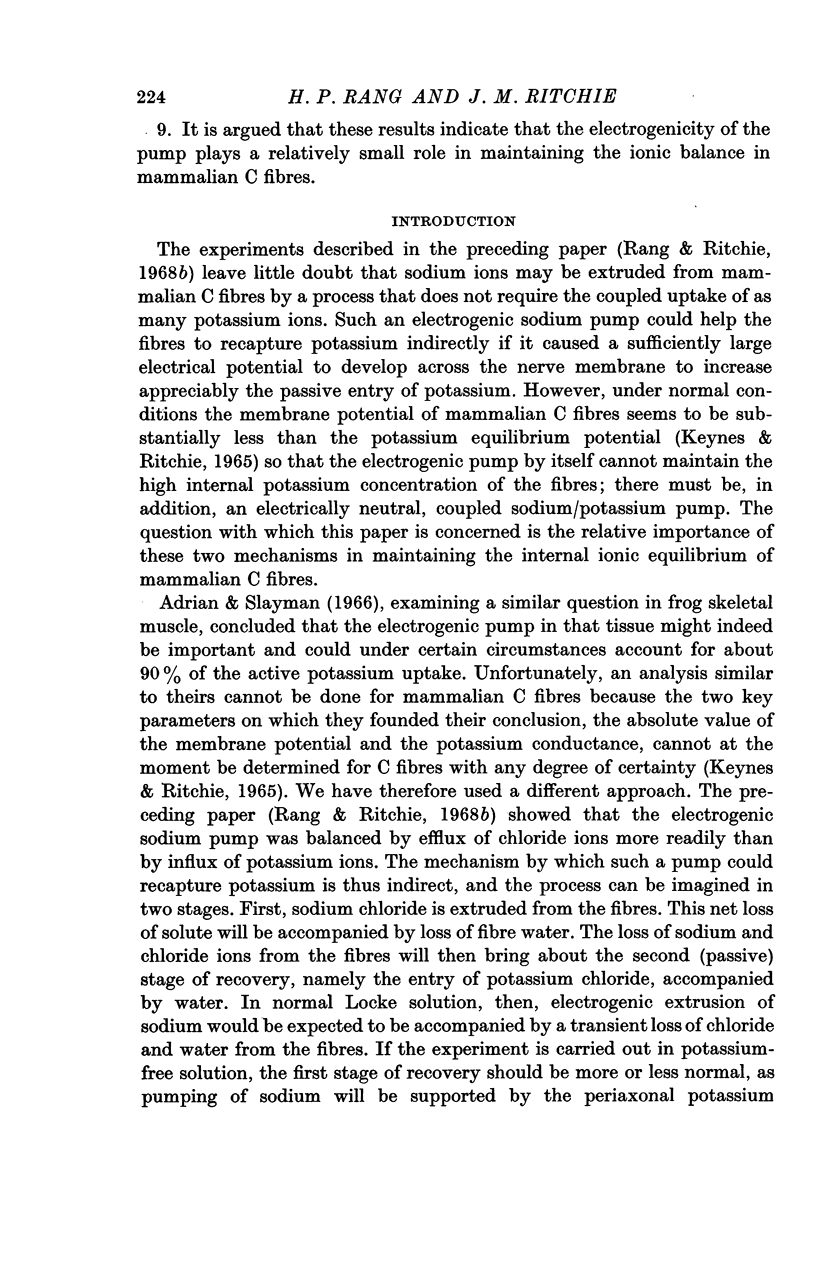
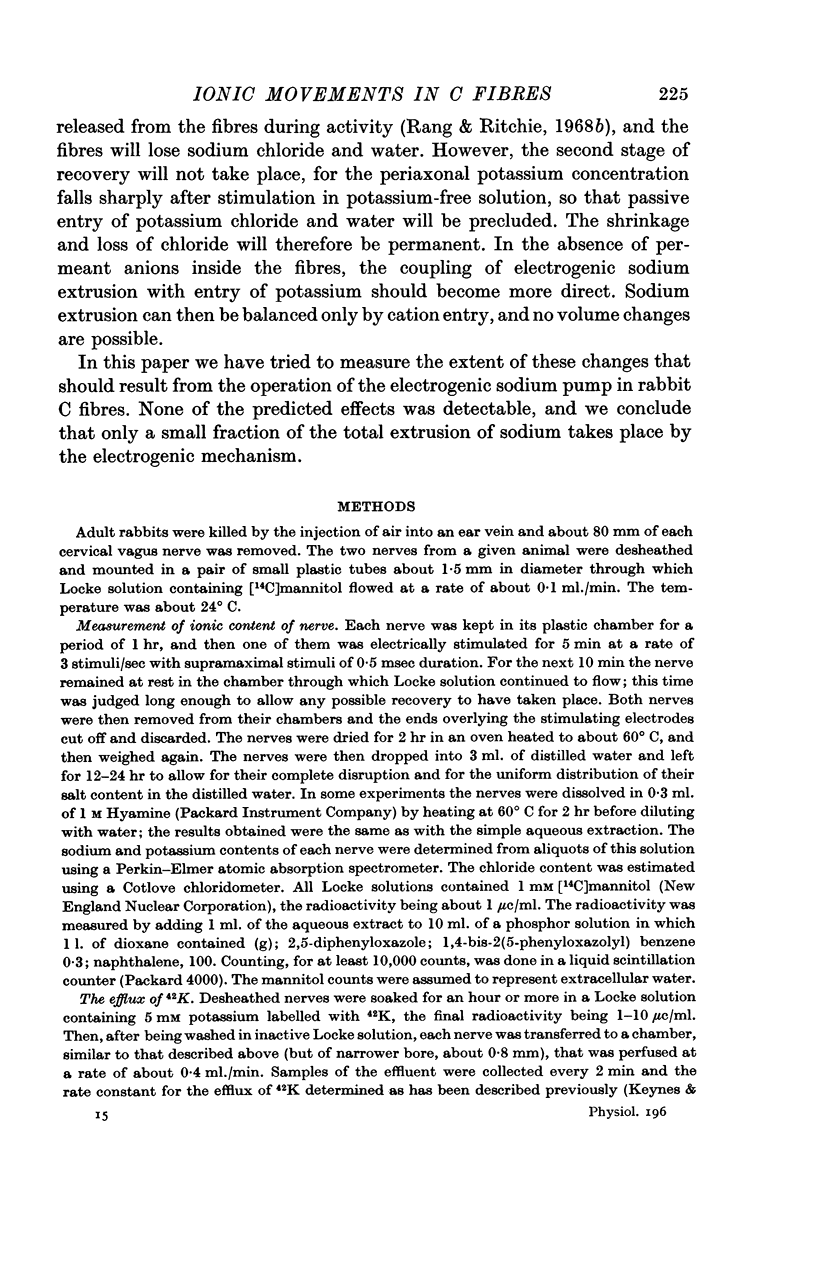
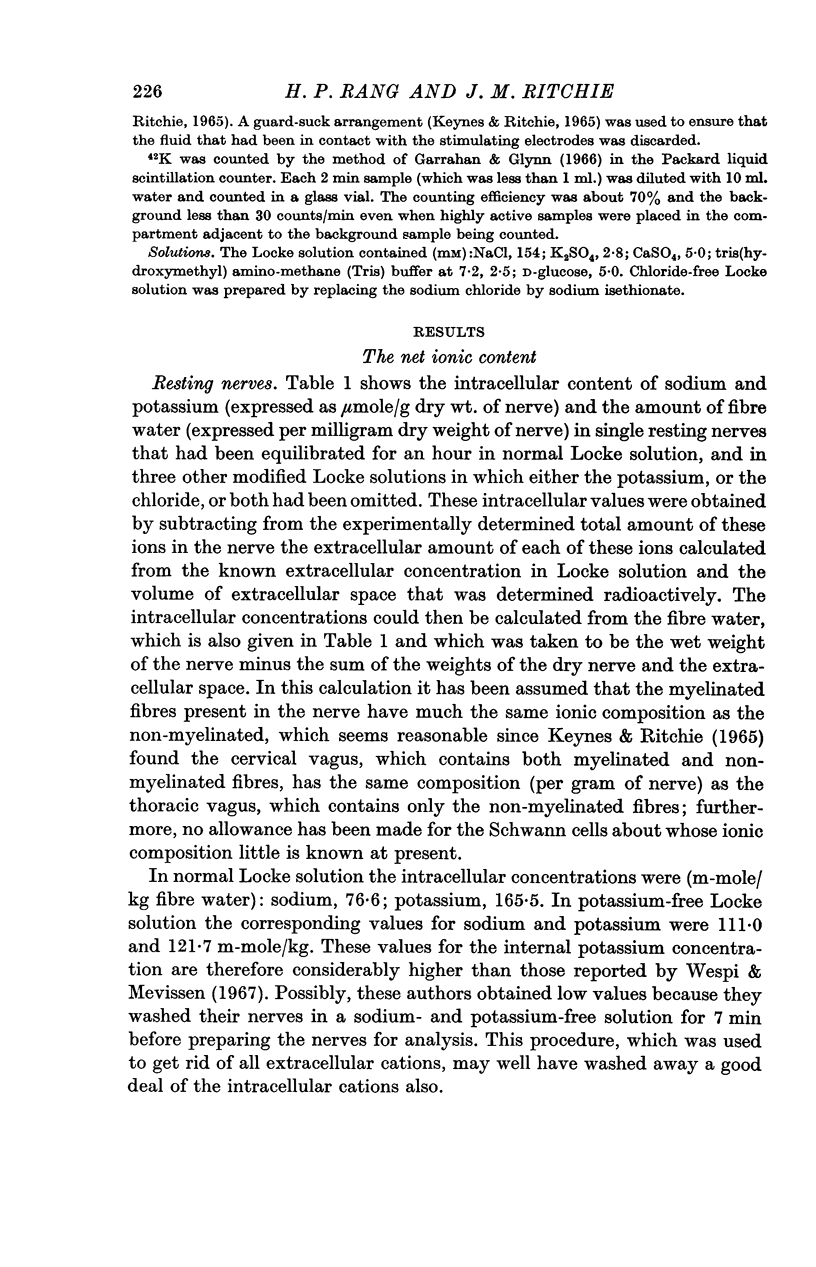
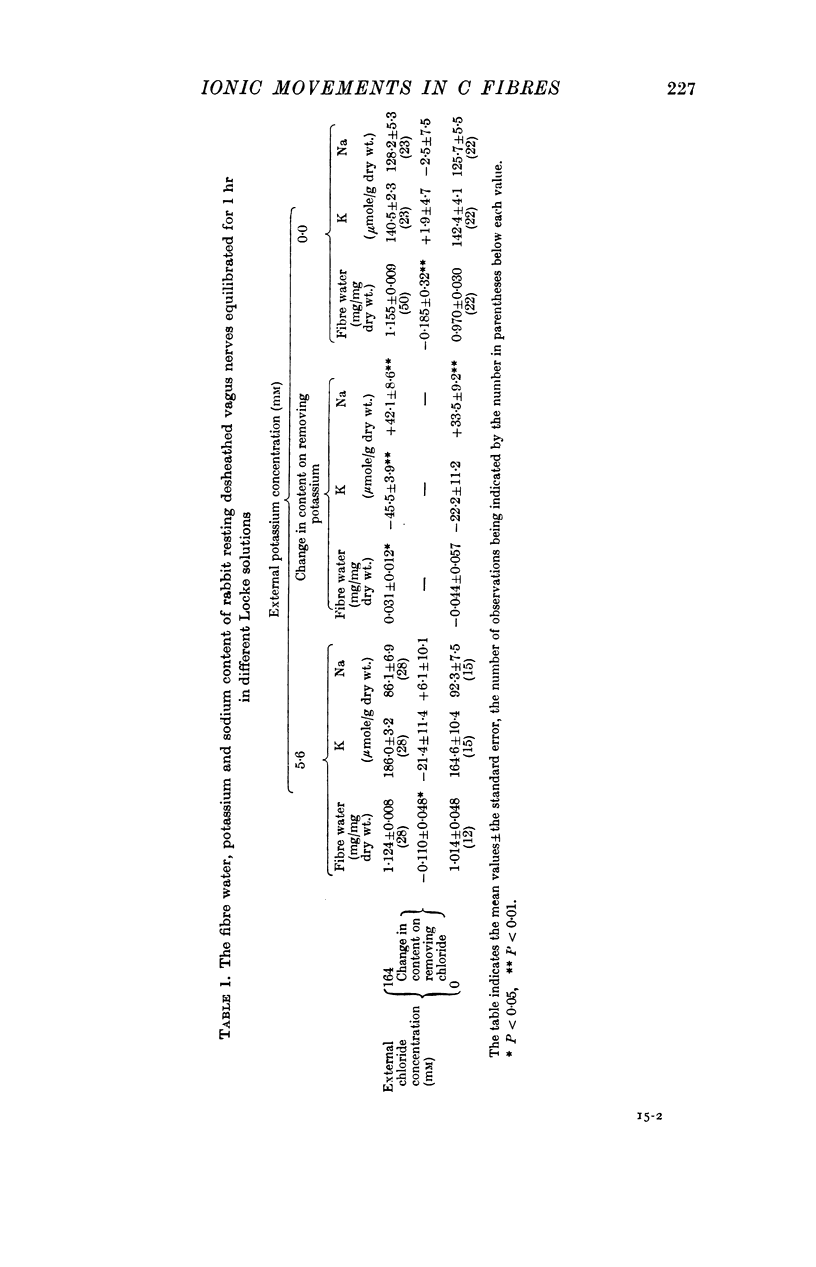
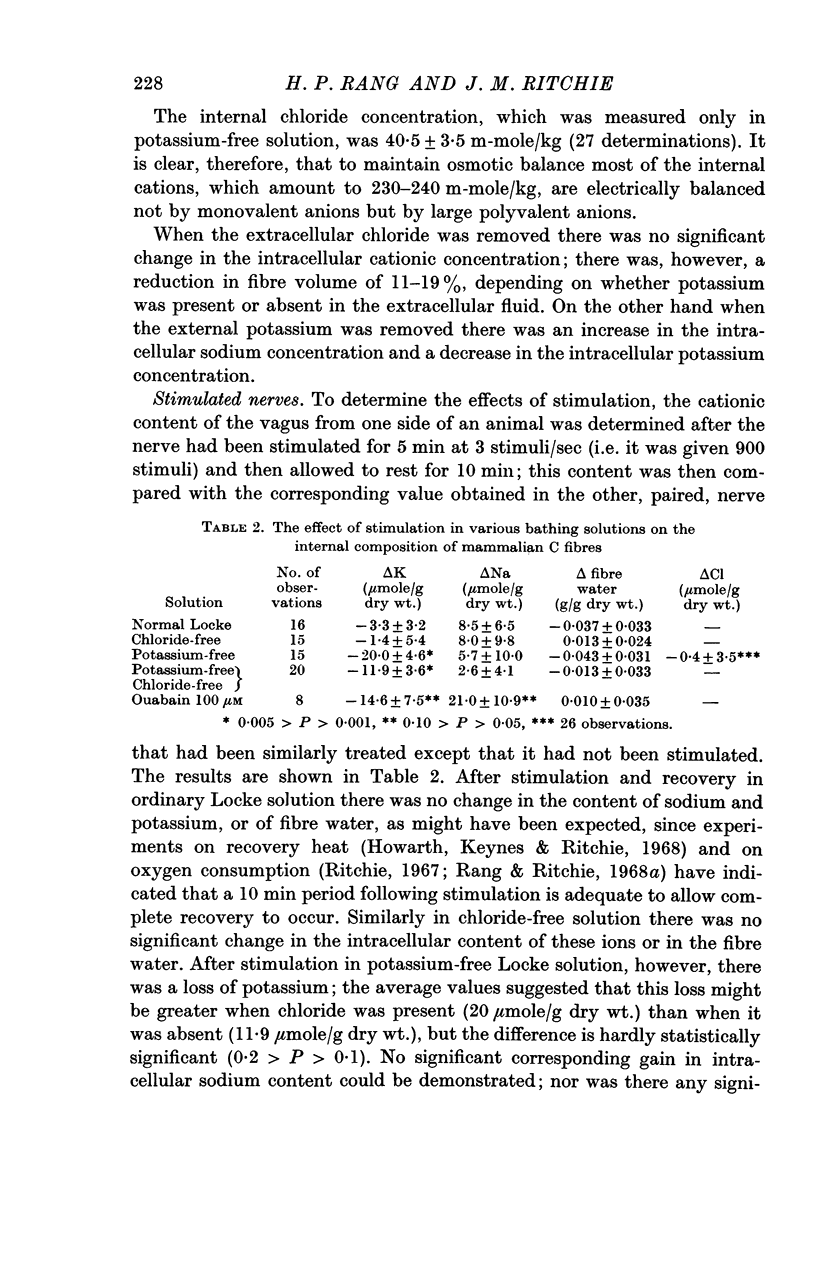
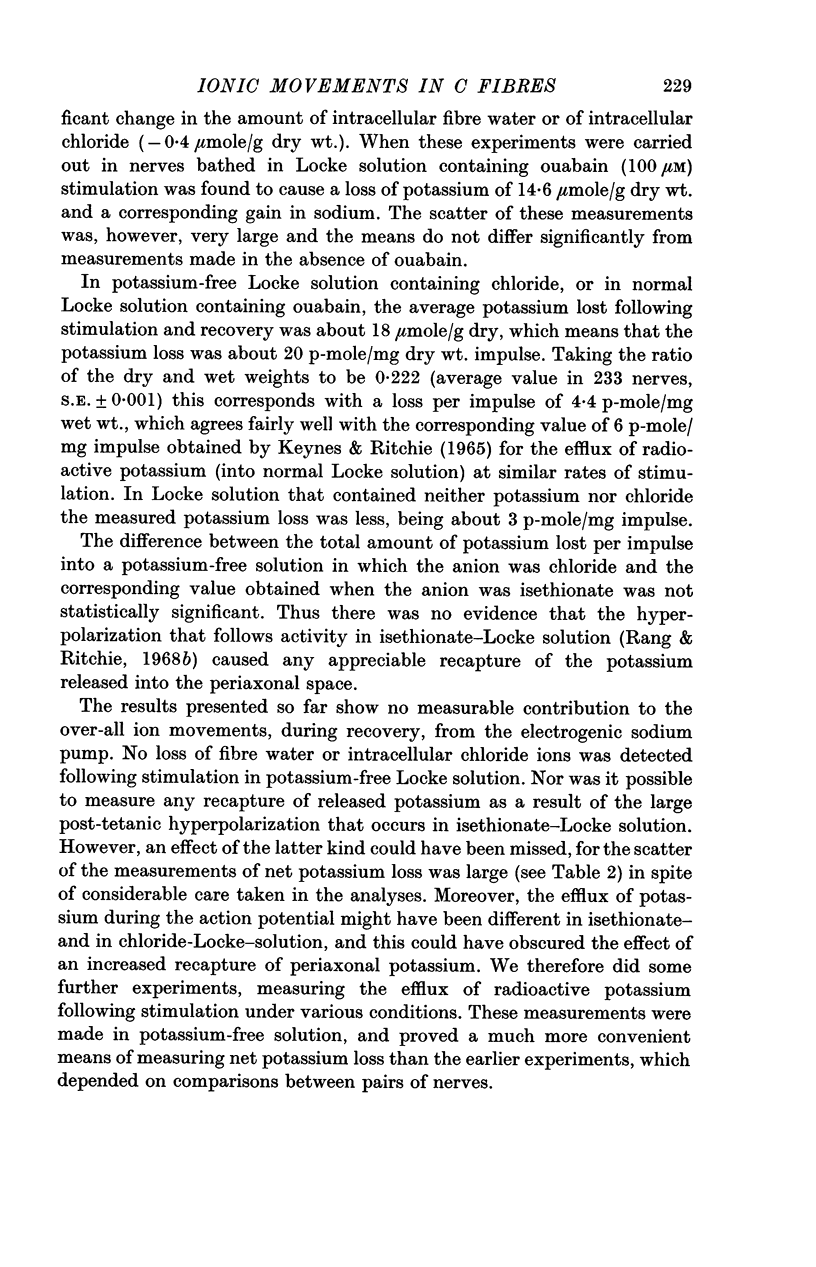
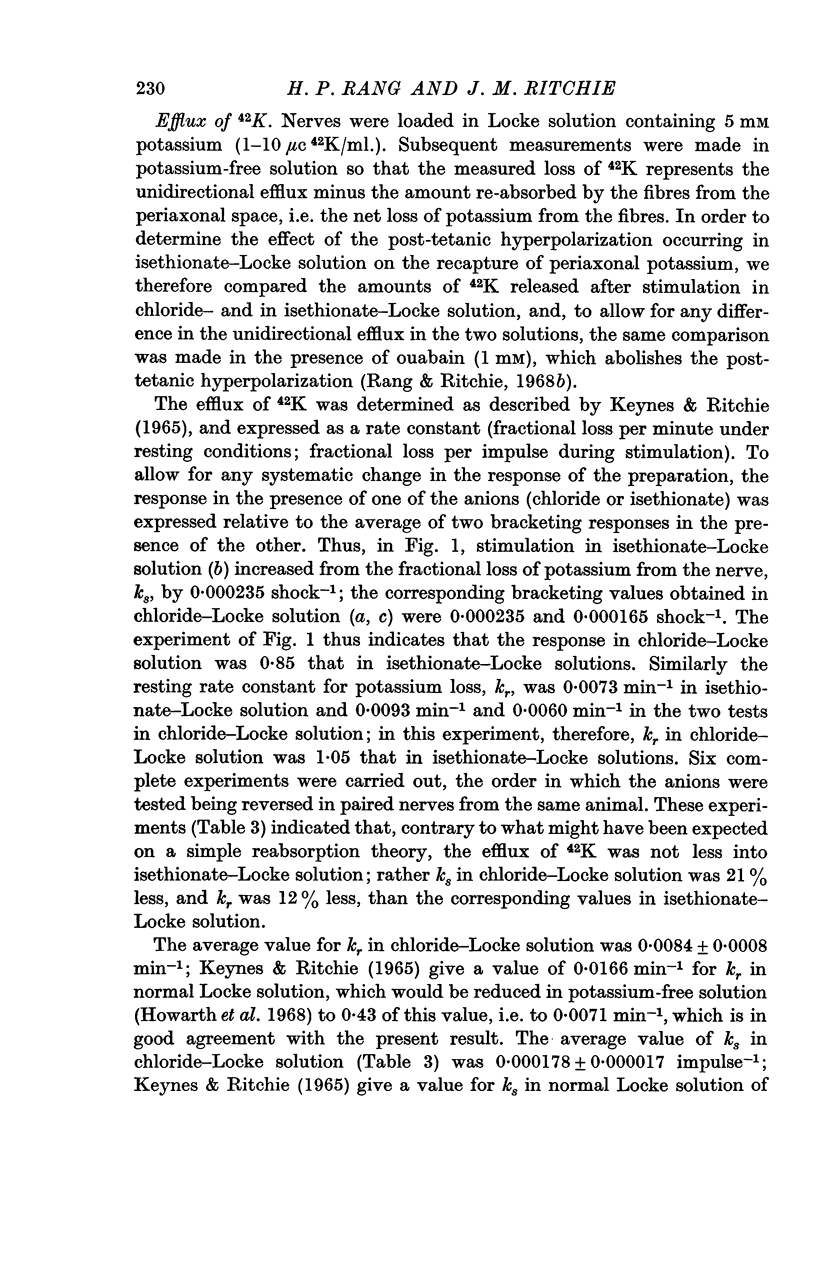
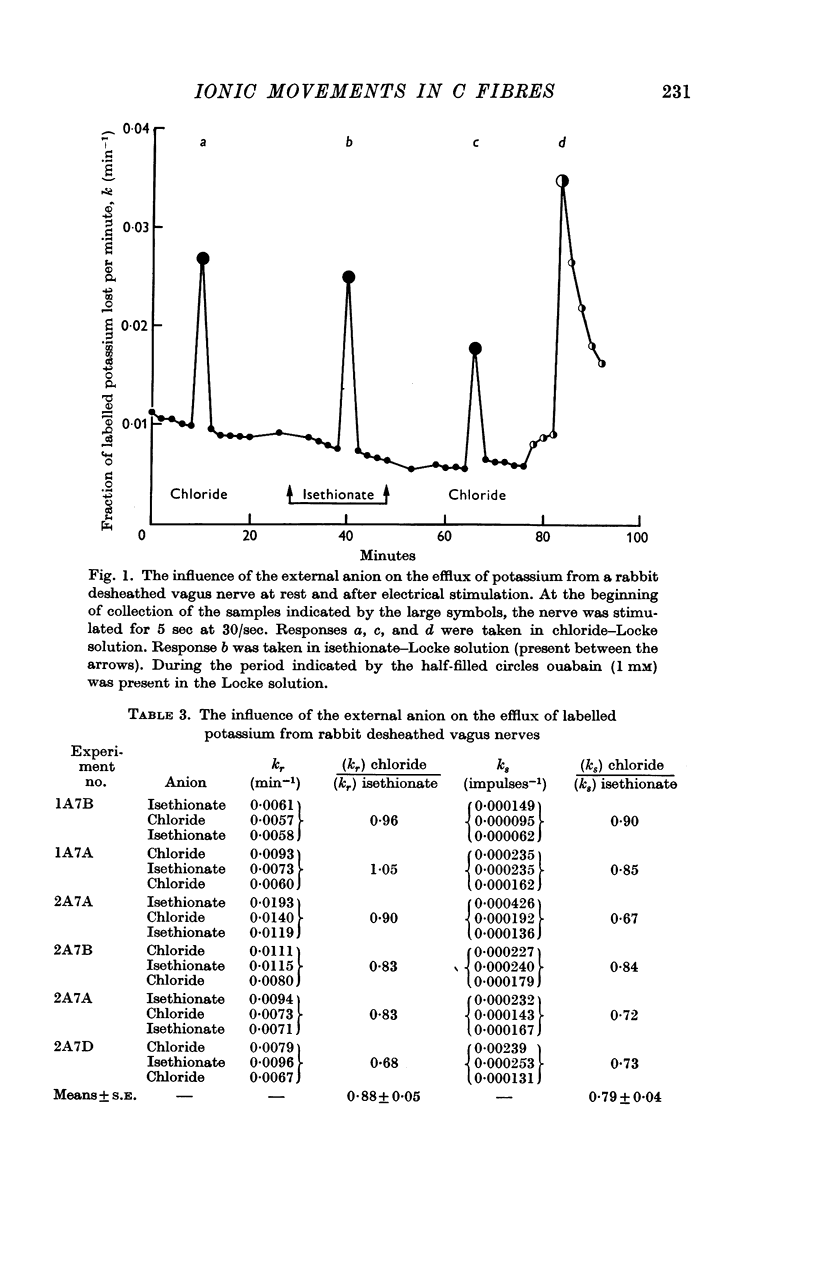
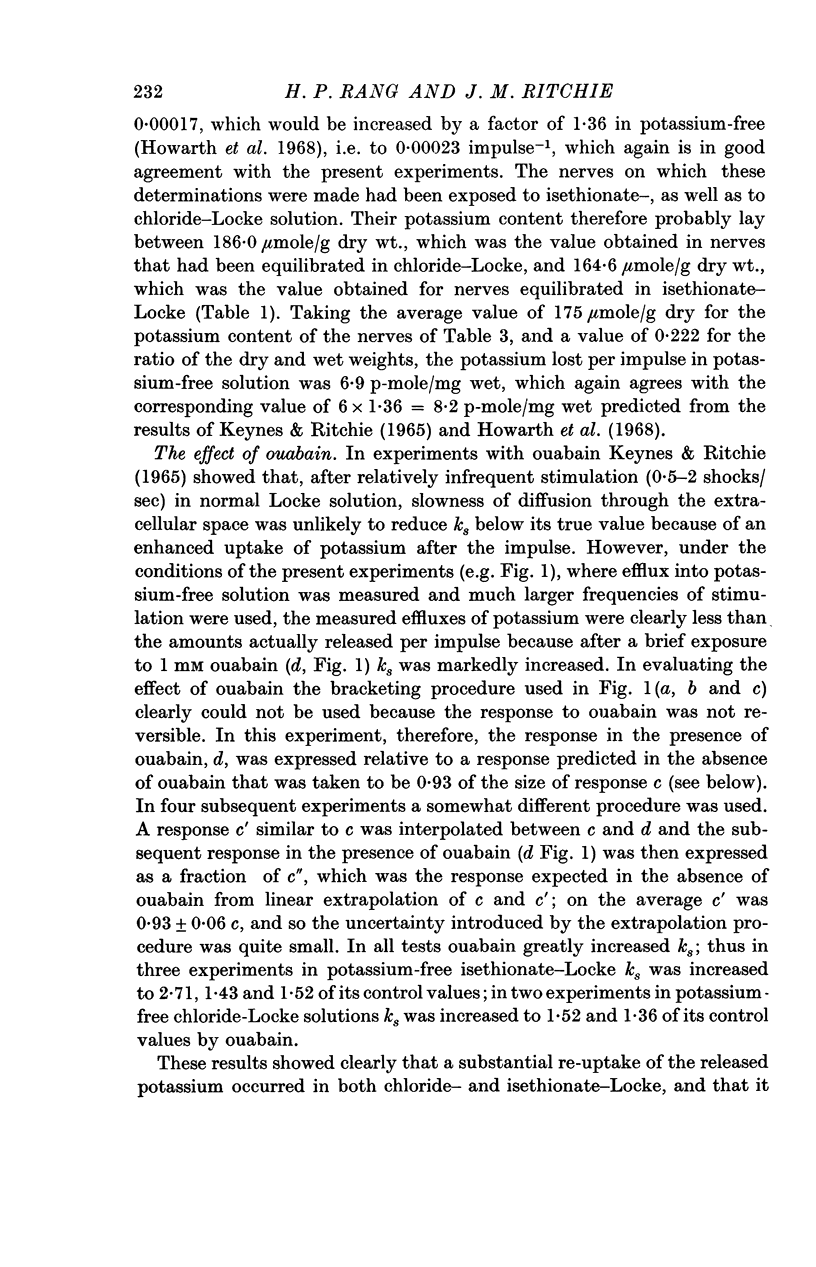
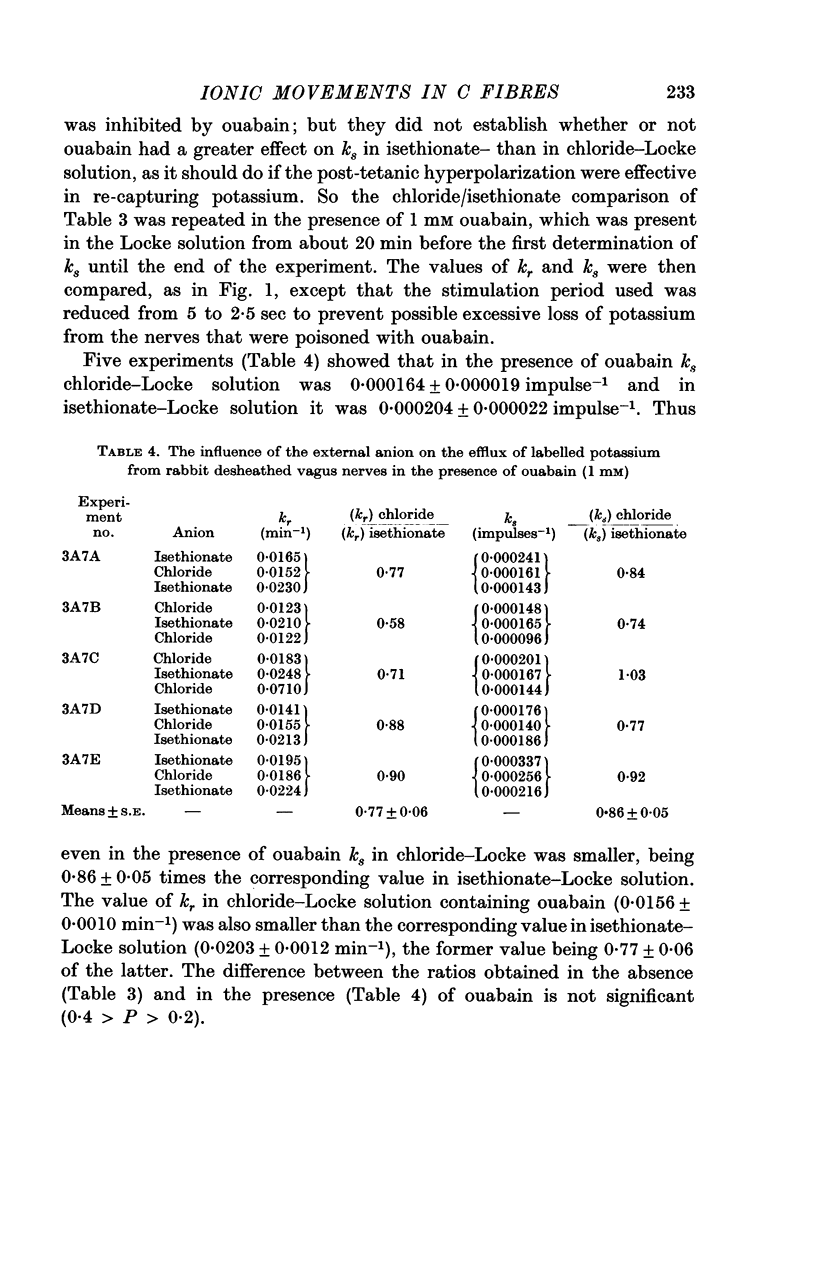
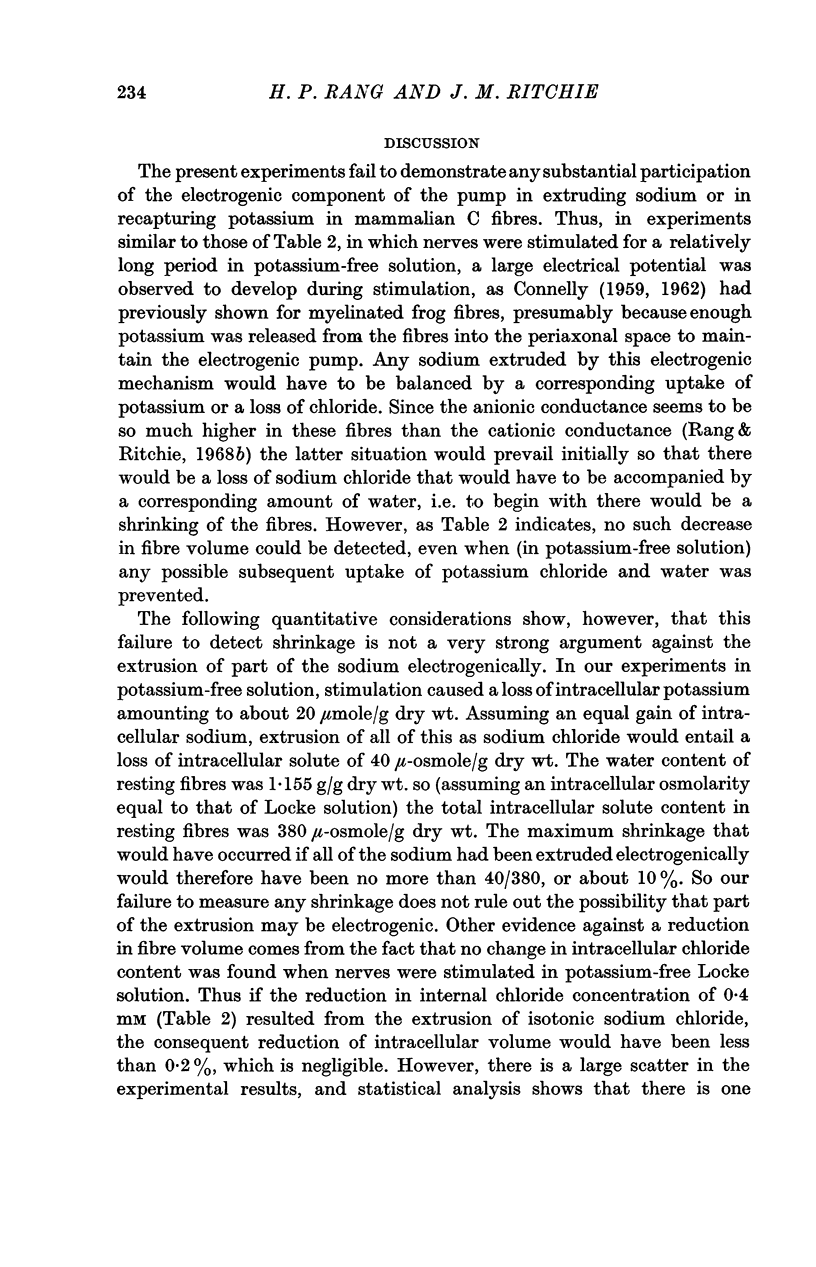
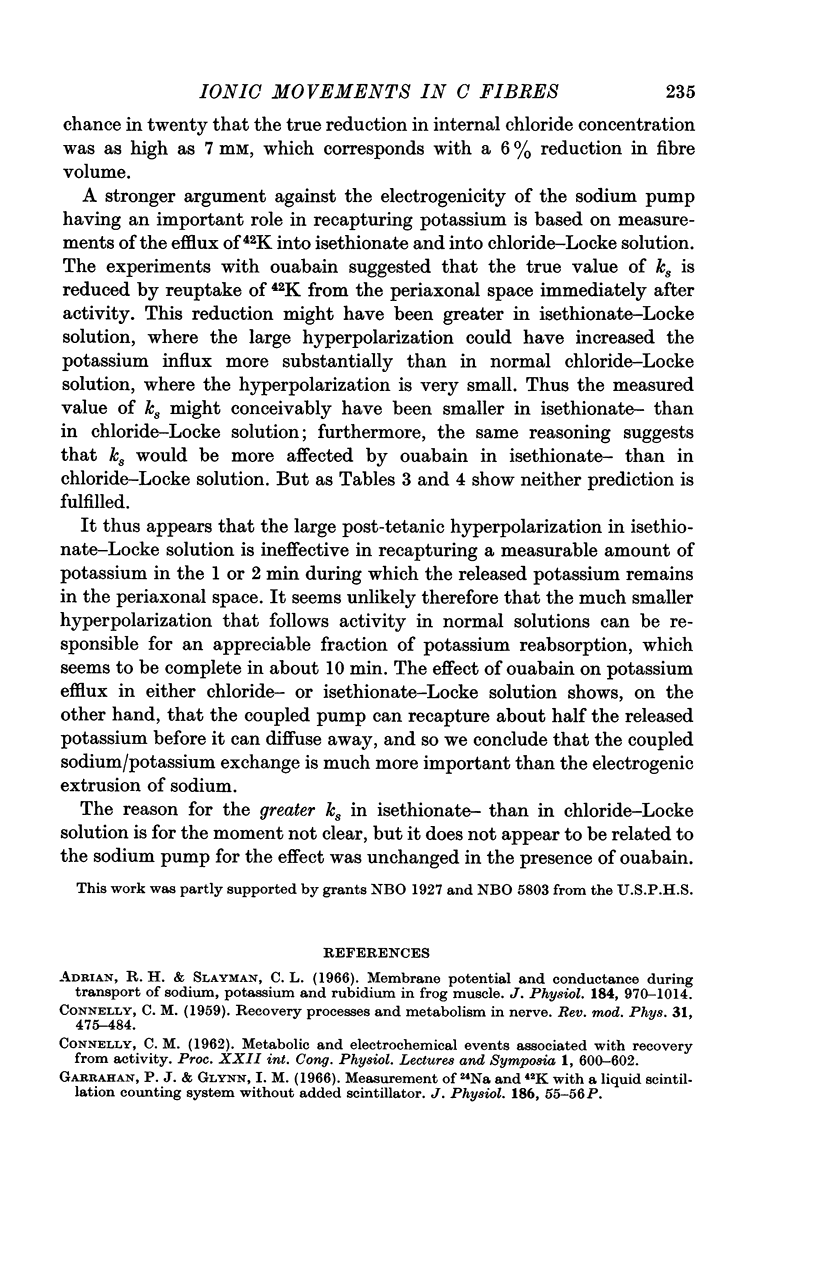
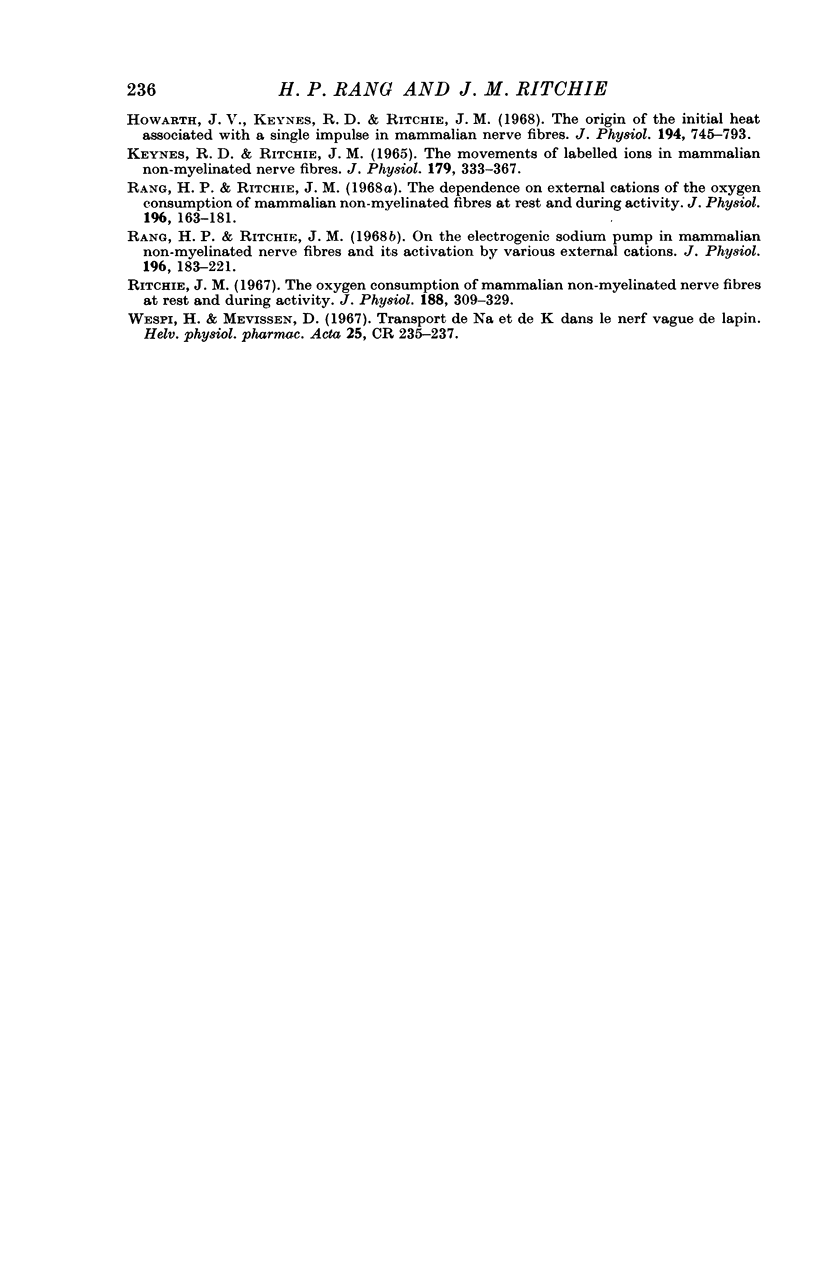
Selected References
These references are in PubMed. This may not be the complete list of references from this article.
- Adrian R. H., Slayman C. L. Membrane potential and conductance during transport of sodium, potassium and rubidium in frog muscle. J Physiol. 1966 Jun;184(4):970–1014. doi: 10.1113/jphysiol.1966.sp007961. [DOI] [PMC free article] [PubMed] [Google Scholar]
- Garrahan P. J., Glynn I. M. Measurement of 24Na and 42K with a liquid-scintillation counting system without added scintillator. J Physiol. 1966 Oct;186(2):55P–56P. [PubMed] [Google Scholar]
- Howarth J. V., Keynes R. D., Ritchie J. M. The origin of the initial heat associated with a single impulse in mammalian non-myelinated nerve fibres. J Physiol. 1968 Feb;194(3):745–793. doi: 10.1113/jphysiol.1968.sp008434. [DOI] [PMC free article] [PubMed] [Google Scholar]
- Keynes R. D., Ritchie J. M. The movements of labelled ions in mammalian non-myelinated nerve fibres. J Physiol. 1965 Jul;179(2):333–367. doi: 10.1113/jphysiol.1965.sp007666. [DOI] [PMC free article] [PubMed] [Google Scholar]
- Rang H. P., Ritchie J. M. On the electrogenic sodium pump in mammalian non-myelinated nerve fibres and its activation by various external cations. J Physiol. 1968 May;196(1):183–221. doi: 10.1113/jphysiol.1968.sp008502. [DOI] [PMC free article] [PubMed] [Google Scholar]
- Rang H. P., Ritchie J. M. The dependence on external cations of the oxygen consumption of mammalian non-myelinated fibres at rest and during activity. J Physiol. 1968 May;196(1):163–181. doi: 10.1113/jphysiol.1968.sp008501. [DOI] [PMC free article] [PubMed] [Google Scholar]
- Ritchie J. M. The oxygen consumption of mammalian non-myelinated nerve fibres at rest and during activity. J Physiol. 1967 Feb;188(3):309–329. doi: 10.1113/jphysiol.1967.sp008141. [DOI] [PMC free article] [PubMed] [Google Scholar]


